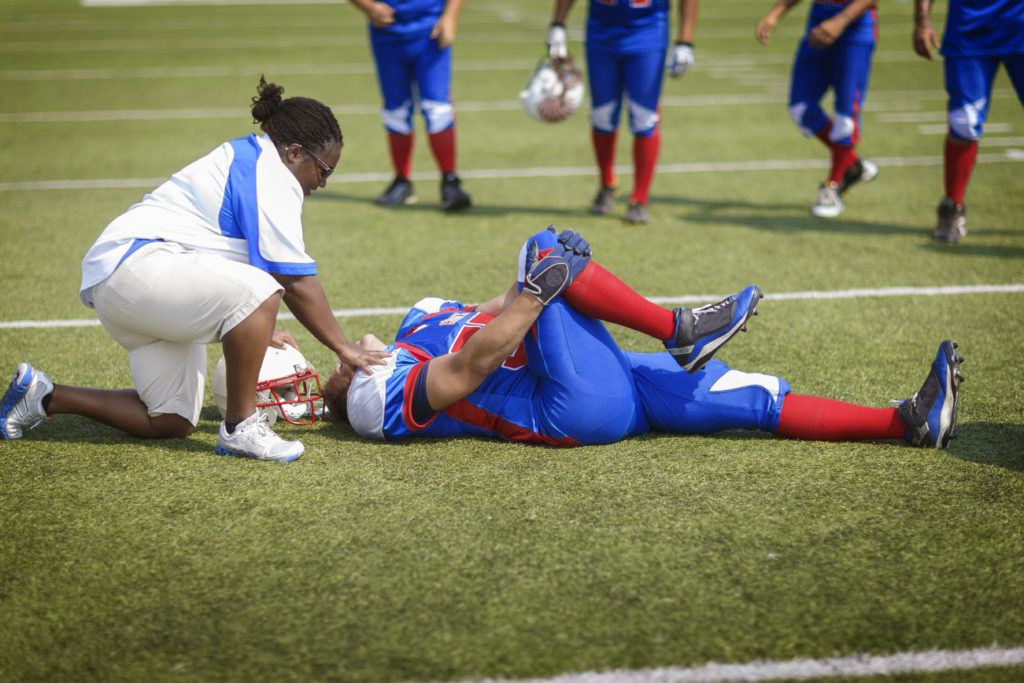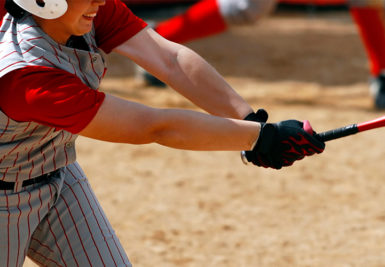THIS POST IS PART OF THE ULTIMATE GUIDE TO SPORTS MEDICINE
An MCL injury is a sprain or tear to the medial collateral ligament (MCL) in your knee.
Anatomy
The MCL is a band of tissue on the inside of your knee. It connects the femur (thighbone) to the bone of the tibia (lower leg). The MCL keeps the knee from bending inward.
What causes an MCL tear?
The MCL is typically injured during activities that involve bending, twisting or a quick change of direction. Football, soccer, skiing and other sports with a lot of sudden stopping, jumping or weaving are prone to MCL injuries. A blow to the outside part of the knee may also injure the MCL.
What are the symptoms of an MCL tear?
- Swelling
- Pain
- Tenderness
- Difficulty moving the knee
- Bruising
- Feeling of instability
How is an MCL tear diagnosed?
To determine whether you have an MCL injury, your physician will ask you for a complete medical history, have you describe your symptoms and how the injury occurred, and conduct a physical examination. An X-ray or MRI may be necessary to confirm the diagnosis and determine if there are other problems.
OrthoIndy is proud to be the official orthopedic provider of the Indiana Pacers. Make an appointment with a knee specialist at OrthoIndy.
How is an MCL tear treated?
Most MCL injuries can be treated with rest, ice and anti-inflammatory medicine. Sometimes crutches or a brace that protects movement in the knee is necessary during the healing process.
Sometimes a severe tear may require surgery; however, this is not common unless you also injure other parts of your knee such as the anterior cruciate ligament (ACL) or meniscus. Surgery depends on how severe the injury is.
- Grade 1: Injuries usually get better in one to three weeks and may only need home treatment along with using crutches for a short time.
- Grade 2: Injuries usually get better in six to eight weeks. A knee brace or weight limitation on the knee may be necessary during the healing process.
- Grade 3: Injuries may require a brace for a few months and limiting weight on the leg for four to six weeks. Surgery may be necessary under some conditions.
The MCL may tear at its origin in the femur or at its insertion on the tibia. Tears at the femoral side typically heal better than those of the tibial side and rarely need surgery. If the MCL needs to be repaired, it is typically sewn back to bone using suture anchors. These are implants placed in the bone that have stitches attached.
What is the recovery from an MCL tear?
Physical therapy to increase range of motion and strengthen the quadriceps muscles and hamstrings is necessary for both non-surgical treatments of MCL injuries and after surgery.
Learn more about having knee pain treated at OrthoIndy.
Schedule an appointment
Your well-being is important to us. Click the button below or call us to schedule an appointment with one of our orthopedic specialists. If your injury or condition is recent, you can walk right into one of our OrthoIndy Urgent Care locations for immediate care. For rehabilitation and physical therapy, no referral is needed to see one of our physical therapists.





